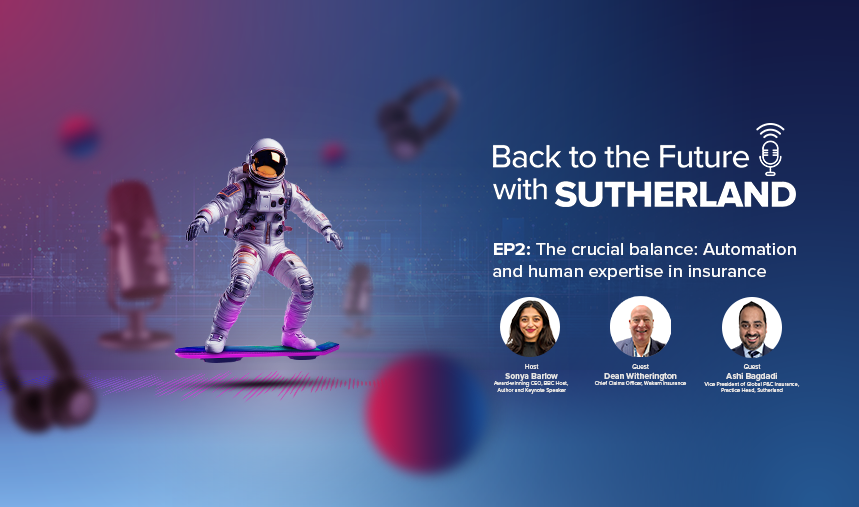Agentic AI isn’t just a smarter algorithm—it marks a fundamental leap in how insurers operate. It represents a new class of intelligent agents that can reason, act and self-correct across insurance workflows, elevating AI from task automation to cognitive orchestration. These agents don’t just automate tasks—they coordinate decisions, ingest complex data and engage in dynamic interactions with systems, data and people.
A recent McKinsey report notes that AI could deliver up to a 40% productivity in insurance over the next decade, driven by technologies like agentic AI that enable “self-learning” systems and process reimagination. Meanwhile, Everest Group highlights agentic AI’s potential to transform not just operations but insurer–customer relationships—turning reactive service into proactive value delivery.
Insurers in the US and UK are embracing this shift. Whether it’s triaging thousands of P&C claims after a storm or automating death claims assessment in life insurance, agentic AI is moving the industry from passive automation to proactive orchestration. According to Avasant, this evolution is essential for insurers navigating macroeconomic volatility, regulatory pressure and customer expectations that now mirror those of fintech’s.
Benefits of Agentic AI in Insurance
Agentic AI brings measurable impact to carriers and policyholders alike, spanning cost, experience, and risk dimensions.
End-to-End Automation of Processes
Agentic AI enables seamless automation from intake to resolution. In P&C, Sutherland platforms like Robility and Voice AI have automated 40% of call traffic and up to 60% of motor claims intake and processing, handling everything from FNOL (First Notice of Loss) to invoicing without human intervention.
Real-Time Risk Adjustment and Decision Making
Agents can analyze economic, environmental and behavioral signals in real time. For example, a pricing agent can reprice commercial property coverage instantly based on storm alerts, driving underwriting accuracy and loss ratio control.
Enhanced Personalization
Policyholders no longer settle for generic interactions. Agentic systems offer intelligent nudges—like recommending flood add-ons based on property data—and enable personalized communications via voice, email, chat, and app.
Operational Scalability
One of the biggest draws is the modularity. Agentic agents can be deployed rapidly to augment underwriting, triage or quoting. This plug-and-play approach supports seasonal or event-driven volume spikes without costly infrastructure changes.
Fraud and Compliance Monitoring
Agentic platforms identify anomalies across data, voice and text channels. Sutherland’s fraud analytics engine in life claims detects high-risk death claims using AI-powered voice biometrics, document forensics, and mortality scoring—helping carriers flag fabricated deaths or identity theft before payouts.
Agentic AI Use Cases in Insurance Industry
Beyond the benefits, the true value of agentic AI lies in the use cases it enables across the insurance lifecycle.
Claims Handling
Agentic AI enables carriers to streamline complex claims processes by orchestrating multiple tasks through autonomous agents. These agents can handle first notice of loss (FNOL), verify coverage, extract data from forms, and interact with core systems—drastically reducing human touchpoints. In motor and property insurance, agentic models can triage claims, initiate repair scheduling, and escalate exceptions, helping insurers resolve straightforward claims in hours rather than days.
Underwriting
Agentic AI in underwriting enables submission intake, document parsing, risk classification, and quote generation with minimal underwriter intervention. Leading insurers use multi-agent systems to prioritize submissions based on risk appetite, automatically extract data from broker emails, and enrich applications with third-party data. This results in higher throughput, better appetite alignment, and improved conversion rates—particularly in commercial lines where volume and complexity are high.
Customer Retention
In life and annuities, agentic systems can identify retention opportunities by analyzing customer behavior, claim events and financial data. These systems personalize outreach—suggesting new policies, savings plans or coverage enhancements based on recent life events. Insurers increasingly deploy AI agents to execute multi-channel retention campaigns with embedded predictive analytics, improving customer lifetime value and reducing policy lapses.
Group Benefits and Enrollment
Agentic AI simplifies the administration of group and voluntary benefits. Intelligent agents support enrollment by validating data, coordinating documentation, checking eligibility, and confirming submissions. This reduces friction for both employers and employees, speeding up onboarding and improving participation rates. Insurers can also automate post-enrollment servicing tasks—like beneficiary updates or payroll deductions—using self-service agents.
Leave and Absence Management
High-volume functions like disability leave and absence management benefit greatly from voice-enabled AI agents. These systems automate intake, identify intent, and route claims to appropriate queues. They validate documentation, trigger decision workflows and provide real-time updates to employees. By automating repetitive inquiries and compliance checks, insurers reduce manual workload, improve turnaround time and maintain consistent communication.
In high-volume leave management scenarios, voice-enabled agentic systems extract caller intent, validate documentation and auto-trigger claims workflows. This reduced manual effort by 100%, improved compliance, and significantly cut down on escalation risk.
Challenges to Consider
While promising, agentic AI introduces complexity related to:
- Governance: Without controls, agents may act outside compliance boundaries. CXOs must enforce decision traceability.
- Integration Overload: Many legacy systems aren’t ready for plug-and-play agents. Successful transformation requires modern APIs and middleware.
- Bias and Transparency: Agents must be trained on diverse datasets and offer clear rationale for decisions to avoid regulatory pushback.
- Talent Gaps: Insurers need cross-functional teams with AI fluency, domain expertise, and change management experience.
- Data Locality and Regulation: In markets like the UK and EU, agents must be compliant with data localization requirements including GDPR.
Sutherland Can Help Transform Your Business with Agentic AI
Sutherland offers a robust ecosystem of insurance-specific agents designed for transformation at scale. With solutions spanning claims automation, underwriting, retention and fraud analytics, we bring:
- Human-in-the-loop orchestration to ensure oversight and accuracy
- Composable deployment models to fit legacy or cloud-first tech stacks
- Global delivery footprint (US, UK, India, Philippines) to ensure cost and compliance alignment
- Proprietary tools like Robility, CognilinkClaims, Voice AI, and HelpTree, already used by top-tier insurers across P&C, Life, and Benefits
To see how we support the insurance industry with modular, intelligent platforms—or learn more about claims automation—reach out today.
Final Thoughts
Agentic AI isn’t science fiction—it’s production-ready and already delivering business outcomes. For insurers in the US and UK, the time is now to move beyond single-point automation and toward intelligent, autonomous ecosystems.
With the right strategy, partners, and governance, agentic AI can deliver:
- 30–50% faster turnaround times
- 20–40% reduction in fraud leakage
- 35% lift in operational productivity
- Consistent, explainable decisions
Explore what’s next with Sutherland’s perspective on AI agents to agentic AI or bookmark our upcoming glossary post answering “what is agentic AI” for deeper understanding.





